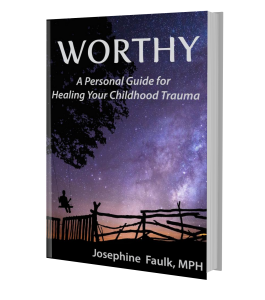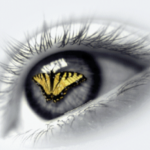Why It Isn’t Bipolar Disorder II–But It Still Hurts Inside
 Whether you are diagnosed with Bipolar Disorder I or II it is an overwhelming label to assume. Although this post is not about Bipolar Disorder I, we will begin there with the Bipolar Disorder symptoms, (American Psychiatric Association, November 2013) which are divided between manic phase and depressive phase symptoms. Bipolar Disorder requires professional supervision and appropriate medication. Some people who have Bipolar Disorder I or II have the added burden of dealing with unresolved chronic childhood trauma. If this is you, continue your medication and carry on through this program knowing that it will all work for good.
Whether you are diagnosed with Bipolar Disorder I or II it is an overwhelming label to assume. Although this post is not about Bipolar Disorder I, we will begin there with the Bipolar Disorder symptoms, (American Psychiatric Association, November 2013) which are divided between manic phase and depressive phase symptoms. Bipolar Disorder requires professional supervision and appropriate medication. Some people who have Bipolar Disorder I or II have the added burden of dealing with unresolved chronic childhood trauma. If this is you, continue your medication and carry on through this program knowing that it will all work for good.
Keep in mind as you read the following that the symptoms are very similar, but much less severe, for Bipolar II, which do not typically have auditory illusions nor lose touch with reality. Afterward, we will look at your symptoms which may actually have an alternate origin than Bipolar Disorder II. The American Psychiatric Association Bipolar Disorder I symptoms are as follows:
Manic Phase
- Feeling on top of the world. A sensation of sheer and utter happiness that nothing—not even bad news or a horrifying event or tragedy—can change.
- Sudden or extreme irritability or rage. While mania is often portrayed as
a pleasurable experience, that is not the case for many people with bipolar disorder. - Grandiose delusions. Individuals imagine that they have special connections with God, celebrities or political leaders.
- Invincibility or unrealistic beliefs in one’s abilities. The person feels that nothing can prevent him or her from accomplishing any task.
- Scheduling more events in a day than can be accomplished; inability to relax or sit still.
- Excessively risky behavior. Reckless driving, outlandish spending sprees, foolish business investments or out-of character sexual behavior.
- Uncontrollable racing thoughts/rapid speech. Ideas that abruptly change from topic to topic expressed in loud, rapid speech that becomes increasingly incoherent.
- Less need for sleep.
Depressed Phase
- Intense sadness or despair. The person feels helpless, hopeless, and worthless.
- No interest in activities they once enjoyed.
- Loss of energy, fatigue.
- Sleep difficulties. Either sleeping too much or not at all.
- Changes in appetite. Either a noticeable increase in appetite or a substantial weight loss unrelated to dieting.
- Difficulty concentrating, remembering, making decisions.
- Thoughts of death or suicide
- Sometimes severe episodes of mania or depression include psychotic symptoms, such as hallucinations (hearing or seeing things not actually there) and delusions (false, strongly held beliefs not influenced by logical reasoning). End of APA excerpt.
The American Psychiatry Association states there is not one particular cause for bipolar disorder. “ . . . rather, many factors act together to produce the illness. Bipolar disorder can run in families, so there is a high likelihood that genes contribute to the illness. However, environmental factors are also important in bipolar disorder—extreme stress, sleep disruption, and drugs and alcohol may trigger episodes in vulnerable patients.”
I am only going to address the symptoms that could possibly be from the lingering effects of unresolved trauma experienced in your childhood. If these are the only ones you experience and you have been diagnosed as having Bipolar Disorder II you may need to take a broader look at whether that is an accurate diagnosis for you.
- Symptoms of hyperactivity. Scheduling more events in a day than can be accomplished; inability to relax or sit still. If, instead of Bipolar Disorder II, you have post childhood trauma symptoms, a possible cause for this may be dissociation. Similar to this same behavior in ADD/ADHD we dissociate/distance ourselves from painful physical, mental and emotional childhood memories that we have never come to terms with. One way is to avoid any introspection. Introspection requires that we slow down and reflect upon ourselves and our own feelings and behavior. Hyperactivity and a hopelessly long daily to do list ensure that our mental and emotional fortress remains intact.
- Symptoms of excessively risky behavior. Reckless driving, outlandish spending sprees, foolish business investments, or out-of character sexual behavior. These same symptoms occur for both ADHD and BPD and can be attempts to actually feel something . . . anything at all. Since we have been using dissociation since childhood to numb ourselves it takes a LOT to stimulate us. In order to get a thrill we take excessive measures. Risky measures.
- Symptoms of sudden or extreme irritability or rage. Sudden is the key word when it is relevant to unresolved childhood trauma, as it is indicative of an automatic response to a trigger. Those with post childhood trauma symptoms are often accused of over-reacting or being emotional when triggered. They are neither. The primal part of their brain, responsible for survival, kicks in to do exactly what it is designed to do – react without forethought. It isn’t about anger or emotions, it’s about self-defense.
The symptoms from the bipolar disorder depressive phase apply to anyone experiencing depression. Those with post childhood trauma symptoms may feel that their depression is cyclical because it keeps coming back. When you have unresolved trauma, you are suppressing through herculean unconscious effort, feelings associated with depression are going to continue to revisit you until you resolve and relieve their origin. Both internal and external triggers can send you to these feelings. For some people it is holidays or their birthday. For others it is observing other people apparently enjoying life in a way they feel eludes them. Criticism, grief, loss or any size failure can also precipitate a tailspin.
As you recover and begin to feel more balance, inner peace and joy you can confer with your doctor to ascertain if you still need medication, or what, if any, adjustments could be made to your current medication. In my chapter on the neuroscience behind the effects of childhood trauma in your adult life you will find more information relevant to bipolar disorder symptoms and in Part II I address the effects on the brain due to the depletion of certain amino acids and the permanent alleviation of many disruptive symptoms once a few of these are replenished. Usually when there is a misdiagnosis of Bipolar Disorder it is the label of Bipolar Disorder II. Still, it would be inappropriate to even entertain the idea of quitting your medication until you had a plan in place that you were following closely, with the aid of a therapist, and seeing excellent results from.
Available at Amazon > Worthy: A Personal Guide for Healing Your Childhood Trauma
Before you go, I want to invite you to join our Worthy Community. By signing up (the form is in the sidebar) you will receive:
* Chapter One of my book WORTHY A Personal Guide for Healing Your Childhood Trauma immediately
* Personal delivery of my entire Monday blog post weekly
****************************
You can find and subscribe to me spreading the love at:
https://www.instagram.com/worthyasweare/
https://www.facebook.com/healingyourchildhoodtrauma/
https://www.pinterest.com/azsunnygrl/worthy-as-we-are/
Copyright ©2018 Josephine Faulk, MPH. Excerpt from WORTHY A Personal Guide For Healing Your Childhood Trauma by Josephine Faulk,MPH. Available, along with accompanying Workbook, on Amazon.




